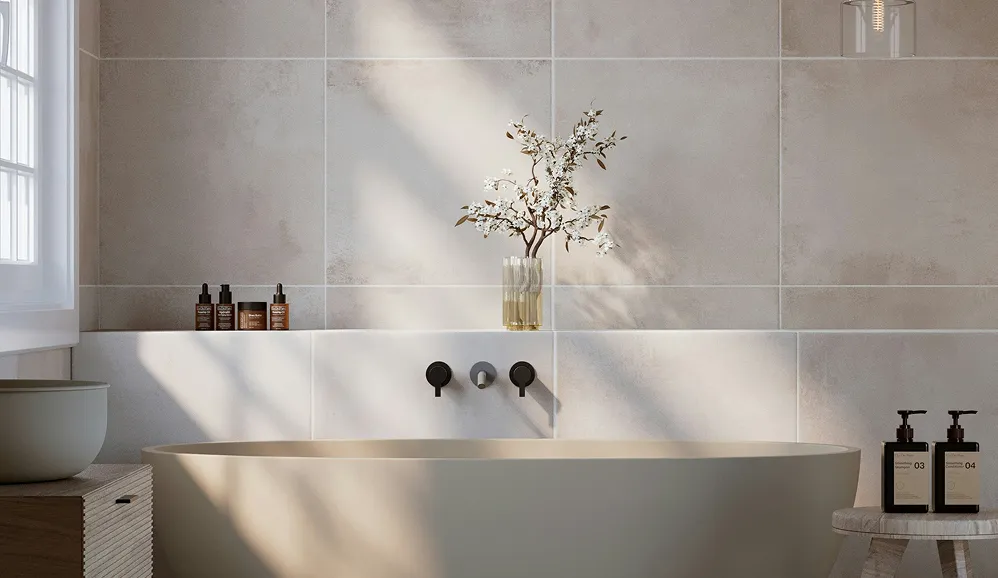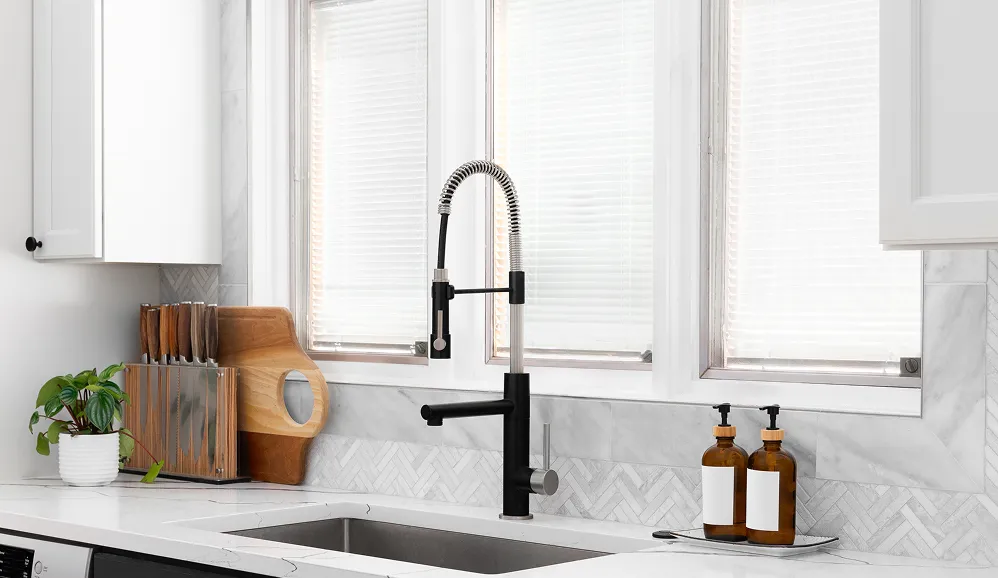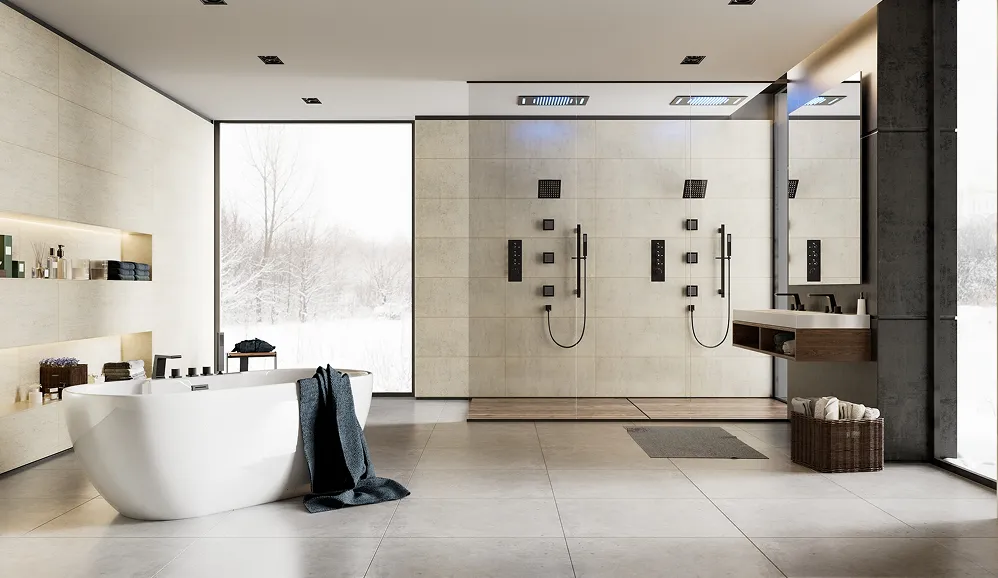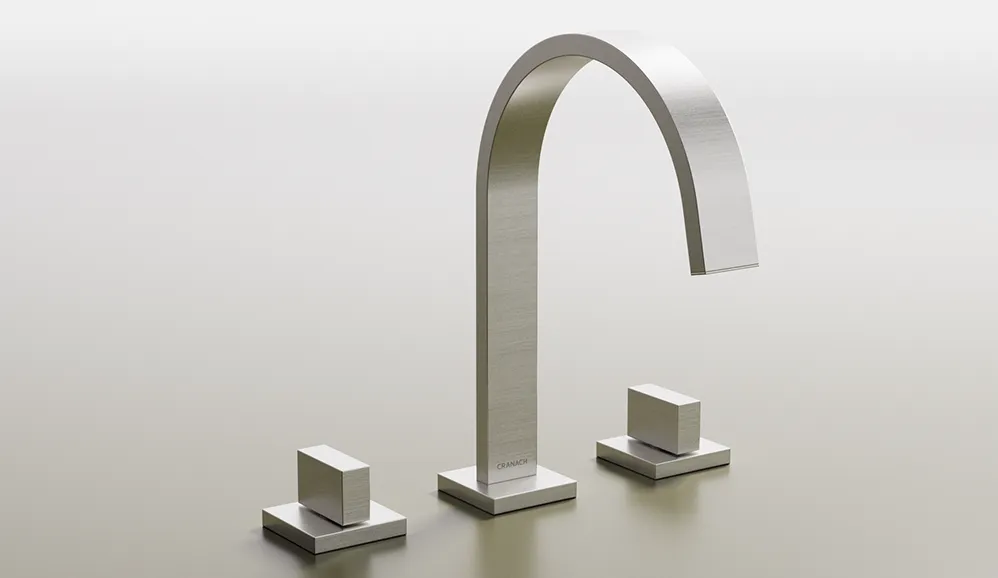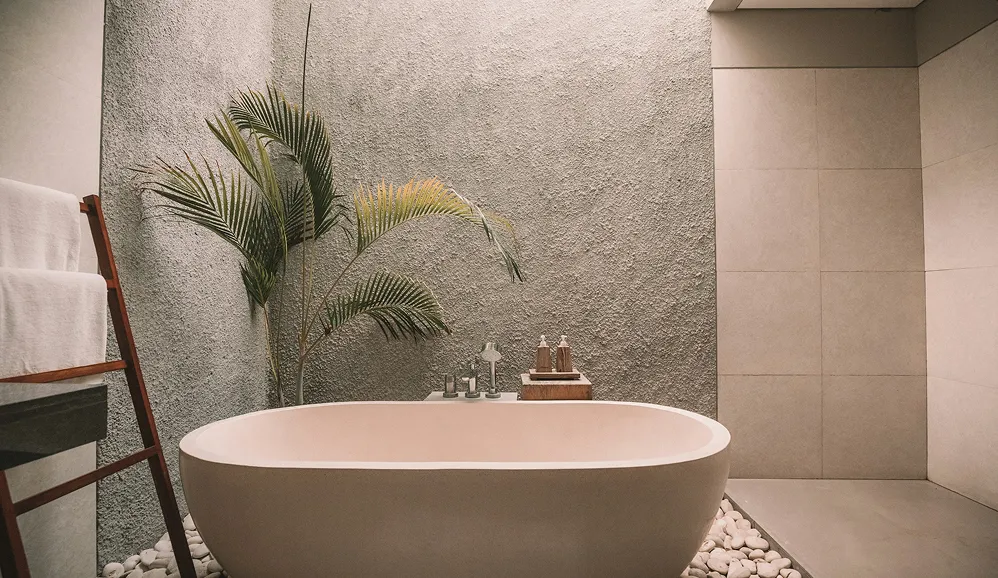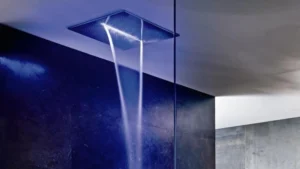So, you’ve crushed your workout. Now comes the big question: should you turn the shower dial to hot or cold? This isn’t just about personal preference; it’s a strategic move in your recovery game. What you choose can either kickstart immediate muscle repair or soothe your body into a state of relaxation.
The whole shower after gym hot or cold debate really just boils down to what you need in that moment.
Understanding Your Post-Workout Shower Strategy
Think of your post-workout shower as part of the workout itself. The temperature you choose triggers very specific responses in your body, and understanding them lets you tailor your recovery to what you just did at the gym. It’s not about one being “better” than the other, but which one is right for right now.
Are you trying to beat the delayed onset muscle soreness (DOMS) that’s sure to come after a heavy leg day? Or are you looking to unwind and improve flexibility after a long, steady cardio session? Your goal dictates the temperature. For a deeper dive into the science, you can explore the hot or cold shower debate in our comprehensive guide.
Key Differences at a Glance
To make the choice a little easier, here’s a quick rundown of what’s happening when you step under the water. This table breaks down the main benefits to help you decide what your body is craving most.
Quick Guide Hot vs Cold Showers Post-Workout
| Factor | Cold Shower | Hot Shower |
|---|---|---|
| Muscle Soreness | Reduces immediate soreness and inflammation | Soothes general muscle tightness and stiffness |
| Blood Flow | Constricts blood vessels (vasoconstriction) | Expands blood vessels (vasodilation) |
| Primary Goal | Acute recovery and reduced swelling | Relaxation and improved flexibility |
| Best For | Intense strength training, high-impact sports | Low-intensity workouts, pre-sleep relaxation |
As you can see, the right choice depends entirely on your workout and your recovery goals. A cold blast is your go-to for fighting off inflammation after high-intensity training, while a hot shower is perfect for relaxing tight muscles and winding down.
Ultimately, a quality shower makes either choice more effective. Having a system that delivers consistent temperature and pressure is key to getting the full benefit, whether you’re after an invigorating cold shock or a comforting wave of heat.
The Science of Cold Showers for Muscle Recovery
When you’re standing there after a workout, wondering whether to turn the handle to hot or cold, it really comes down to what you need in that moment. If immediate recovery is your goal, cold water is a seriously powerful tool.
The second that cold water hits your skin, your body kicks into gear with a process called vasoconstriction. It’s just a fancy word for your blood vessels getting narrower. This reaction is the secret sauce behind why athletes swear by cold water therapy.
Think of it like putting an ice pack on a sprained ankle, but for your entire body. By constricting those blood vessels, you’re actively reducing the inflammation that’s brewing in your muscles after you’ve pushed them hard. This limits swelling and tissue breakdown, which in turn dials down the all-too-familiar pain of delayed onset muscle soreness (DOMS). It also helps flush out metabolic junk like lactic acid that builds up during exercise.
The Athlete’s Edge
This isn’t just some new trend; elite athletes have been on this for a long time. Ice water baths have been a staple in recovery routines for at least two decades. Research going back to 2004 showed that athletes were using this method to cut down on soreness and inflammation.
But that same research also pointed out a trade-off. For some cyclists, cold water immersion actually hurt their performance, causing a 13.7% drop in maximum power. It can also get in the way of long-term training adaptations by lowering muscle temperature too much.
Key Takeaway: Cold showers are fantastic for dealing with immediate, post-workout soreness. But timing is everything if you don’t want to accidentally mess with your long-term muscle-building signals.
Potential Drawbacks for Muscle Growth
While a cold blast feels great for recovery, it might not be your best friend if your main goal is building muscle mass (hypertrophy). Here’s the thing: that inflammatory response you’re trying to shut down is actually a critical part of the signal that tells your muscles to repair themselves and grow back stronger.
If you jump into a cold shower right away, you risk cutting that process short and short-changing your gains over time.
To get the most out of your recovery shower, the experience itself matters. You need a good, steady flow for that cold blast to really work its magic. If your water pressure is weak, our guide on how to increase water pressure in your shower has some fixes that can help.
For anyone focused on getting bigger and stronger, the best approach is a strategic one. Try waiting an hour or two after your workout before hopping into a cold shower. That delay gives your body enough time to kickstart those crucial muscle-building signals. Then, you can cool down to manage the soreness. It’s the best of both worlds—you get the growth and the relief.
How Hot Showers Aid Post-Workout Recovery
While a cold shock certainly has its place, turning the dial the other way offers a different, but equally powerful, set of recovery benefits. When you’re weighing a shower after gym hot or cold, the biggest advantage of warmth is vasodilation—the widening of your blood vessels. It’s the complete opposite of what cold water does.
This expansion gets your circulation going, acting like an express delivery service for your tired muscles. It rushes oxygen and key nutrients to tissues that are desperate for repair, fueling the recovery process at a cellular level. At the same time, this enhanced blood flow is great at clearing out the metabolic junk that builds up during a tough workout, helping you feel less stiff later on.
A hot shower is also a fantastic tool for melting away muscle tension and improving your flexibility. The warmth soothes tight, stiff muscles, making it a perfect follow-up to workouts heavy on stretching, like yoga, or after a long, grueling run.
Preserving Performance for What Comes Next
For athletes who need to be ready to go again soon—think tournament play or back-to-back training days—the choice between hot and cold becomes even more critical. Cold water is well-known for dulling soreness, but there’s growing evidence that hot water might actually be better for keeping your muscles powerful.
One recent study compared the effects of hot and cold water immersion after a high-intensity run. The results were pretty revealing. While both hot and cold water helped with muscle soreness compared to doing nothing, the group that soaked in hot water at 104°F (40°C) showed a better recovery of their muscle power output. This strongly suggests that if you need to perform again tomorrow, warmth might just be the smarter choice. You can read the full research about these performance findings for yourself.
Key Insight: If your main goal is being ready for another workout or competition the next day, a hot shower can help preserve your muscle power more effectively than a cold one.
The Mental Wind-Down
Let’s not forget the mental game. Beyond all the physical perks, the psychological effect of a hot shower is undeniable. That comforting warmth can seriously dial down your stress levels and put you in a state of pure relaxation. This calming effect is a perfect primer for better sleep, which is arguably one of the most important parts of a solid recovery plan.
To really get the most out of it, a high-quality shower experience is essential. Investing in premium shower systems with Farne collection from CRANACH ensures you get consistent temperature and pressure every time. Features like adjustable spray settings can turn a simple rinse into a therapeutic massage for your muscles, boosting both your physical and mental recovery. To elevate your entire post-workout routine, check out the CRANACH shower systems with Farne collection.
Choosing Your Shower Based on Your Workout
Deciding between a hot or cold shower after the gym isn’t just about what feels good in the moment. It’s a strategic choice that can make or break your recovery, and it all comes down to your specific training. The right temperature depends entirely on your workout type, its intensity, and what you need your body to do next.
Let’s move beyond theory and look at some practical, real-world scenarios to help you make the right call.
Strength Training and High-Intensity Workouts
After a grueling session of heavy lifting or a punishing round of high-intensity interval training (HIIT), your number one priority is fighting inflammation. You want to minimize that all-too-familiar delayed onset muscle soreness (DOMS). In this situation, a cold shower is your best friend.
The cold water causes your blood vessels to constrict, a process that helps reduce swelling and flush out metabolic byproducts that have built up in your muscle tissues. Sure, it might feel a bit shocking for a few minutes, but this approach gives your acute recovery a serious boost, helping you bounce back faster.
But timing is everything. To avoid blunting the natural inflammatory signals that actually help trigger muscle growth, it’s a good idea to wait at least 20-30 minutes before you step under that cold spray. This short cool-down window gives your body a head start on the muscle-building process before you introduce the cold.
This handy decision tree breaks it down for you, helping you choose the right shower based on your immediate post-workout goals.
The takeaway is simple: if crushing muscle soreness is your main goal, cold is the clear winner. If you’re aiming for relaxation, a hot shower is the way to go.
Endurance, Flexibility, and Pre-Competition Scenarios
Now, let’s say you’ve just wrapped up a long run, a deep yoga session, or you’ve got another competition lined up for tomorrow. Your recovery goals are different, and so is your ideal shower. Here, a hot or warm shower is much more beneficial.
The heat encourages vasodilation, which is just a fancy way of saying it opens up your blood vessels. This increases blood flow, delivering a fresh supply of oxygen and nutrients that help your muscles repair and relax.
A warm shower is also fantastic for soothing muscle stiffness, improving flexibility, and giving you a mental wind-down. That kind of relaxation is crucial for overall recovery and getting quality sleep. For athletes who need to stay in peak condition, a hot shower can even be better for preserving muscle power for the next event, a finding supported by research from organizations like the American Physiological Society.
To make this even clearer, here’s a quick guide to help you match your shower to your workout.
Workout Scenario Shower Recommendations
This table offers a practical guide for choosing the right shower temperature based on your workout type and what you want to achieve.
| Workout Type | Primary Goal | Recommended Shower | Reasoning |
|---|---|---|---|
| Heavy Weightlifting | Reduce inflammation, minimize soreness | Cold Shower | Constricts blood vessels to flush out metabolic waste and reduce acute swelling. |
| HIIT or CrossFit | Kickstart muscle recovery | Cold or Contrast Shower | Cold water minimizes DOMS. Alternating hot and cold can boost circulation. |
| Long-Distance Run | Relax muscles, improve blood flow | Hot/Warm Shower | Increases circulation to deliver nutrients for repair and soothes tired muscles. |
| Yoga or Stretching | Enhance flexibility, promote relaxation | Hot/Warm Shower | Eases muscle stiffness and promotes a state of calm, aiding deeper stretches. |
| Pre-Competition (Next Day) | Maintain muscle power, relax mentally | Hot/Warm Shower | Keeps muscles loose and ready for performance without the shock of cold. |
Ultimately, choosing the right temperature is about listening to your body and aligning your shower with your fitness goals for that specific day.
Of course, a premium shower experience makes every choice more effective. High-quality shower systems with Farne collection from CRANACH deliver the consistent temperature and pressure you need to ensure your post-workout rinse provides the maximum therapeutic benefit. With fully adjustable settings, you can customize your recovery perfectly, whether you need a gentle, muscle-soothing flow or a powerful, revitalizing rinse.
Explore the CRANACH shower systems with Farne collection to perfect your post-workout ritual.
Using Contrast Showers for Advanced Recovery
If a standard hot or cold shower feels a bit too one-note, you might be ready for the next level in recovery: contrast water therapy. This is the practice of alternating between hot and cold water during a single shower, and it’s a powerful tool used by athletes to bounce back faster.
So, what’s happening in your body? The rapid temperature shifts create a “pumping” effect in your circulatory system. The hot water causes your blood vessels to dilate (open up), and the cold water forces them to constrict (tighten).
This powerful back-and-forth action pushes blood flow beyond what a single-temperature shower can do, helping to efficiently flush out metabolic waste products like lactic acid that build up during a tough workout.
Contrast Shower Step-by-Step
To get this right, you want to start with heat to get the blood flowing and relax your muscles before hitting them with the cold shock.
A simple, effective routine is to follow 3 minutes of hot water (around 100–104°F) with 1 minute of cold (a brisk 50–60°F).
- Aim for a total of 3–4 cycles of hot-then-cold. This gives you the benefits without overdoing it.
- Always end on cold. It leaves you feeling sharp and invigorated. If you’re particularly sensitive, ending on warm is okay too.
- Make sure the water hits your major muscle groups—think quads, calves, shoulders, and back.
When done properly, this method is fantastic for taming inflammation and can be more effective at targeting delayed onset muscle soreness (DOMS). It’s a hybrid approach that, according to new research, might just offer the best recovery benefits of all.
“Contrast showers enhance circulation more effectively than single-temperature showers and help reduce fatigue.”
– Leading Sports Scientist
Think of contrast showers as a perfect complement to your other recovery tactics, like stretching or foam rolling. It’s another tool in the arsenal. For more unique ways to use water for wellness, check out our guide on The Wellness Shower.
This isn’t just theory. Elite triathletes often use a protocol of 2 minutes hot to 30 seconds cold, crediting it with reducing stiffness before their next training session.
Tip: Breathe steadily through the temperature changes. Keep your movements slow and deliberate to avoid feeling dizzy as your body adjusts to the alternating streams.
This advanced technique truly combines the best of both worlds, taking your shower after gym hot or cold decision and turning it into a strategic recovery session.
Key Precautions Guide
While powerful, this method isn’t for everyone. A couple of things to keep in mind:
- Stick to the recommended 3-4 cycles. Pushing it further can put unnecessary stress on your vascular system.
- If you have any cardiovascular issues, like high blood pressure, chat with your doctor before trying this.
As with any recovery method, the most important thing is to listen to your body. You can always adjust the timing and temperatures to find what works best for you.
Elevating Your Post-Workout Shower Routine
Your post-workout recovery is about more than just picking between a shower after gym hot or cold. To really get the most out of it, the quality of your shower matters. A powerful, consistent shower can turn a simple rinse into a genuine therapeutic session for your body.
Think about it: the right water pressure can either amplify the soothing effect of a hot shower or sharpen the invigorating shock of a cold one. This is where your choice of shower system becomes a key part of your fitness journey, not just a bathroom fixture.
The Power of a Premium Shower System
This is exactly why we designed high-performance shower systems with farne collection. They’re built to transform that post-workout ritual. With features like adjustable spray settings, you can customize your recovery in real-time.
For instance, you could use a powerful, targeted jet setting to massage sore quads or shoulders, helping to work out knots and deep-seated tension. On other days, a gentle, wide spray might be all you need to promote overall relaxation after a lighter session. This level of control means you can tailor the experience to exactly what your body needs that day. You can explore the CRANACH shower systems with Farne collection to see how they can upgrade your routine.
By turning your shower into an active recovery tool, you can significantly shorten downtime and improve overall muscle health. A system that provides a consistent, powerful flow is essential for achieving these results.
Beyond the Shower A Holistic Approach
Recovery doesn’t stop once you turn off the water. To round out the experience and maximize your results, integrate these simple post-shower habits into your routine:
- Hydrate Immediately: You’ve lost a lot of fluid, so start replenishing it right away. Water is critical for flushing out toxins and helping your cells function properly.
- Moisturize Your Skin: Both hot and cold showers can strip your skin of its natural oils. A good moisturizer helps lock in hydration and keeps your skin’s protective barrier strong. It’s also smart to be mindful of water usage; you can learn more about how many gallons of water a shower uses in our guide.
- Fuel Your Body: Your muscles are crying out for repair. Grab a protein-rich snack or meal within 45-60 minutes of your workout to give them the building blocks they need.
When you combine the right water temperature with a premium shower system and smart aftercare, you create a powerful recovery process that gets you ready for your next challenge.
Still Have Questions About Post-Workout Showers?
Deciding whether to take a hot or cold shower after the gym often brings up a few more practical questions. To help you get your post-workout routine just right, we’ve put together some clear, science-backed answers to the queries we hear most often.
How Long Should I Wait to Shower After a Workout?
Give your body about 20 minutes to cool down after you finish exercising. This little window of time is crucial—it allows your heart rate and core body temperature to begin their journey back to normal.
Jumping into a shower too quickly, especially one with a dramatic temperature change, can put unnecessary stress on your cardiovascular system. Use those 20 minutes to do some light stretching or rehydrate. Once you notice you’ve stopped sweating heavily, that’s your body’s signal that it’s ready.
Are Cold Showers Bad for Building Muscle?
Not necessarily, but the timing is everything. Some research hints that plunging into an ice-cold shower immediately after a heavy lifting session might blunt the very inflammatory response that tells your muscles to grow and repair themselves. This process, known as hypertrophy, is fundamental to building muscle mass.
If your main goal is packing on muscle, you might want to wait at least an hour before taking that cold shower. Another great option is to go for a lukewarm or contrast shower instead, which still offers recovery benefits without potentially getting in the way of your gains.
Is a Hot Shower Good After a Long Run?
Absolutely. For endurance athletes, a hot shower after a long run can feel like heaven for a reason. The warm water encourages vasodilation, which is just a fancy way of saying it opens up your blood vessels.
This increased blood flow is fantastic for delivering much-needed oxygen and nutrients to your tired muscles, helping them repair. It’s also great for relaxing muscle tension, easing stiffness, and giving you a much-needed mental break. Since the goal after cardio is usually relaxation and recovery—not building huge muscles—the concerns about blunting muscle growth don’t really apply.
What Is the Ideal Temperature for a Recovery Shower?
Getting the temperature right can make all the difference. For a truly therapeutic cold shower, aim for water that’s between 50-60°F (10-15°C). This is the sweet spot—cold enough to trigger vasoconstriction and knock down inflammation, but not so frigid it becomes a shock to your system.
For a relaxing hot shower, a temperature between 95-105°F (35-40.5°C) is perfect. It’s warm enough to soothe your muscles without being so hot that it scalds your skin or leaves it feeling dry. And remember, being mindful of shower temperature is also important after getting any body art, as we explain in our guide on showering after getting a tattoo.
To truly get the most out of your recovery, the quality of your shower matters. CRANACH offers premium shower systems with farne collection that are engineered for consistent temperature and pressure, letting you fine-tune your post-workout therapy. You can explore the collection at https://cranachhome.com/product/swoof/product_cat-shower-system/product_tag-farne/ and take your recovery routine to the next level.

